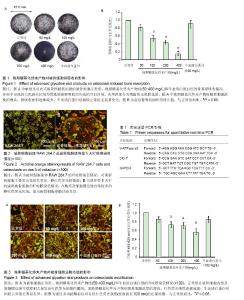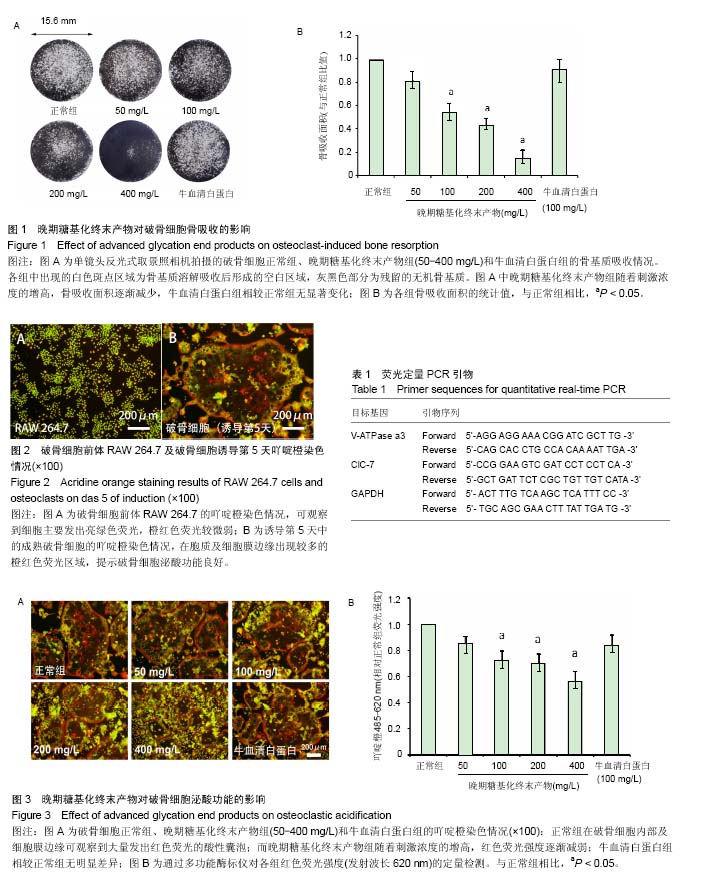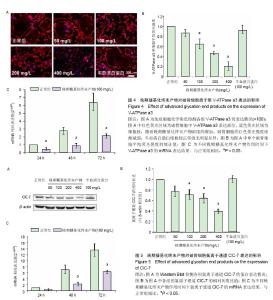| [1] Franke S, Sommer M, Ruster C, et al. Advanced glycation end products induce cell cycle arrest and proinflammatory changes in osteoarthritic fibroblast-like synovial cells. Arthritis Res Ther. 2009;11(5):R136.[2] Song Y, Wang Y, Zhang Y, et al. Advanced glycation end products regulate anabolic and catabolic activities via NLRP3-inflammasome activation in human nucleus pulposus cells. J Cell Mol Med. 2017.[3] Li C, Chang Y, Li Y, et al. Advanced glycation end products promote the proliferation and migration of primary rat vascular smooth muscle cells via the upregulation of BAG3. Int J Mol Med. 2017.[4] Botros N, Sluik D, van Waateringe RP, et al. Advanced glycation end-products (AGEs) and associations with cardio-metabolic, lifestyle and dietary factors in a general population: the NQplus study. Diabetes Metab Res Rev. 2017.[5] Papagrigoraki A, Del GM, Cosma C, et al. Advanced Glycation End Products are Increased in the Skin and Blood of Patients with Severe Psoriasis. Acta Derm Venereol. 2017.[6] Li Y, Liu S, Zhang Z, et al. RAGE mediates accelerated diabetic vein graft atherosclerosis induced by combined mechanical stress and AGEs via synergistic ERK activation. PLoS One. 2012;7(4):e35016.[7] Sanguineti R, Puddu A, Mach F, et al. Advanced Glycation End Products Play Adverse Proinflammatory Activities in Osteoporosis. Mediators Inflamm. 2014;2014:1-9.[8] 孙红艳, 刘洪臣. 晚期糖基化终末产物(AGEs)与衰老[J]. 中华老年口腔医学杂志, 2010,8(5):314-317.[9] 戴荣峰, 金晖, 孙子林. 晚期糖基化终末产物与骨质疏松[J]. 中国骨质疏松杂志, 2007,13(4):284-287.[10] Yamagishi S. Role of advanced glycation end products (AGEs) in osteoporosis in diabetes. Curr Drug Targets. 2011;12(14): 2096-2102.[11] 蔡德鸿,陈宏,张桦,等.糖基化终末产物对破骨细胞骨吸收功能的影响[J].中华内分泌代谢杂志,2003,19(1):61-63.[12] Miyata T, Notoya K, Yoshida K, et al. Advanced glycation end products enhance osteoclast-induced bone resorption in cultured mouse unfractionated bone cells and in rats implanted subcutaneously with devitalized bone particles. J Am Soc Nephrol. 1997;8(2):260-270.[13] Valcourt U, Merle B, Gineyts E, et al. Non-enzymatic glycation of bone collagen modifies osteoclastic activity and differentiation. J Biol Chem. 2007;282(8):5691-5703.[14] 李子卿, 王海兴, 何沛恒, 等. 晚期糖基化终末产物可影响破骨细胞的骨吸收功能[J]. 中国组织工程研究, 2016,20(20):2907-2914.[15] Teitelbaum SL. Bone resorption by osteoclasts. Science. 2000;289(5484):1504-1508.[16] Boyle WJ, Simonet WS, Lacey DL. Osteoclast differentiation and activation. Nature. 2003;423(6937):337-342.[17] Novack DV, Faccio R. Osteoclast motility: putting the brakes on bone resorption. Ageing Res Rev. 2011;10(1):54-61.[18] Qin A, Cheng TS, Pavlos NJ, et al. V-ATPases in osteoclasts: Structure, function and potential inhibitors of bone resorption. Int J Biochem Cell Biol.2012;44(9):1422-1435.[19] Maeda H, Kowada T, Kikuta J, et al. Real-time intravital imaging of pH variation associated with osteoclast activity. Nat Chem Biol. 2016;12(8):579-585.[20] Ying H, Qin A, Cheng TS, et al. Disulfiram attenuates osteoclast differentiation in vitro: a potential antiresorptive agent. PLoS One. 2015;10(4):e125696.[21] Pierzynska-Mach A, Janowski PA, Dobrucki JW. Evaluation of acridine orange, LysoTracker Red, and quinacrine as fluorescent probes for long-term tracking of acidic vesicles. Cytometry A. 2014;85(8):729-737.[22] Dong XN, Qin A, Xu J, et al. In situ accumulation of advanced glycation endproducts (AGEs) in bone matrix and its correlation with osteoclastic bone resorption. Bone. 2011; 49(2):174-183.[23] Ishibashi Y, Matsui T, Isami F, et al. N-butanol extracts of Morinda citrifolia suppress advanced glycation end products (AGE)-induced inflammatory reactions in endothelial cells through its anti-oxidative properties. BMC Complement Altern Med. 2017;17(1):137.[24] Yang L, Meng H, Yang M. Autophagy protects osteoblasts from advanced glycation end products-induced apoptosis through intracellular reactive oxygen species. J Mol Endocrinol. 2016;56(4):291-300.[25] 丁志民, 王珏, 王东苗, 等. 晚期糖基化终末产物与炎症性骨破坏[J]. 口腔生物医学, 2013,4(1):48-51.[26] 张尧, 于明香. 糖尿病对骨代谢的影响及相关机制[J]. 中国临床医学, 2013,20(2):234-236.[27] Rousselle AV, Heymann D. Osteoclastic acidification pathways during bone resorption. Bone. 2002;30(4):533-540.[28] Baron R, Neff L, Louvard D, et al. Cell-mediated extracellular acidification and bone resorption: evidence for a low pH in resorbing lacunae and localization of a 100-kD lysosomal membrane protein at the osteoclast ruffled border. J Cell Biol. 1985;101(6):2210-2222.[29] Zhu S, Rea SL, Cheng T, et al. Bafilomycin A1 Attenuates Osteoclast Acidification and Formation, Accompanied by Increased Levels of SQSTM1/p62 Protein. J Cell Biochem. 2016;117(6):1464-1470.[30] Oot RA, Couoh-Cardel S, Sharma S, et al. Breaking up and making up: The secret life of the vacuolar H+ -ATPase. Protein Sci. 2017.[31] McGuire C, Stransky L, Cotter K, et al. Regulation of V-ATPase activity. Front Biosci (Landmark Ed). 2017;22:609-622.[32] Colacurcio DJ, Nixon RA. Disorders of lysosomal acidification-The emerging role of v-ATPase in aging and neurodegenerative disease. Ageing Res Rev. 2016;32:75-88. |



